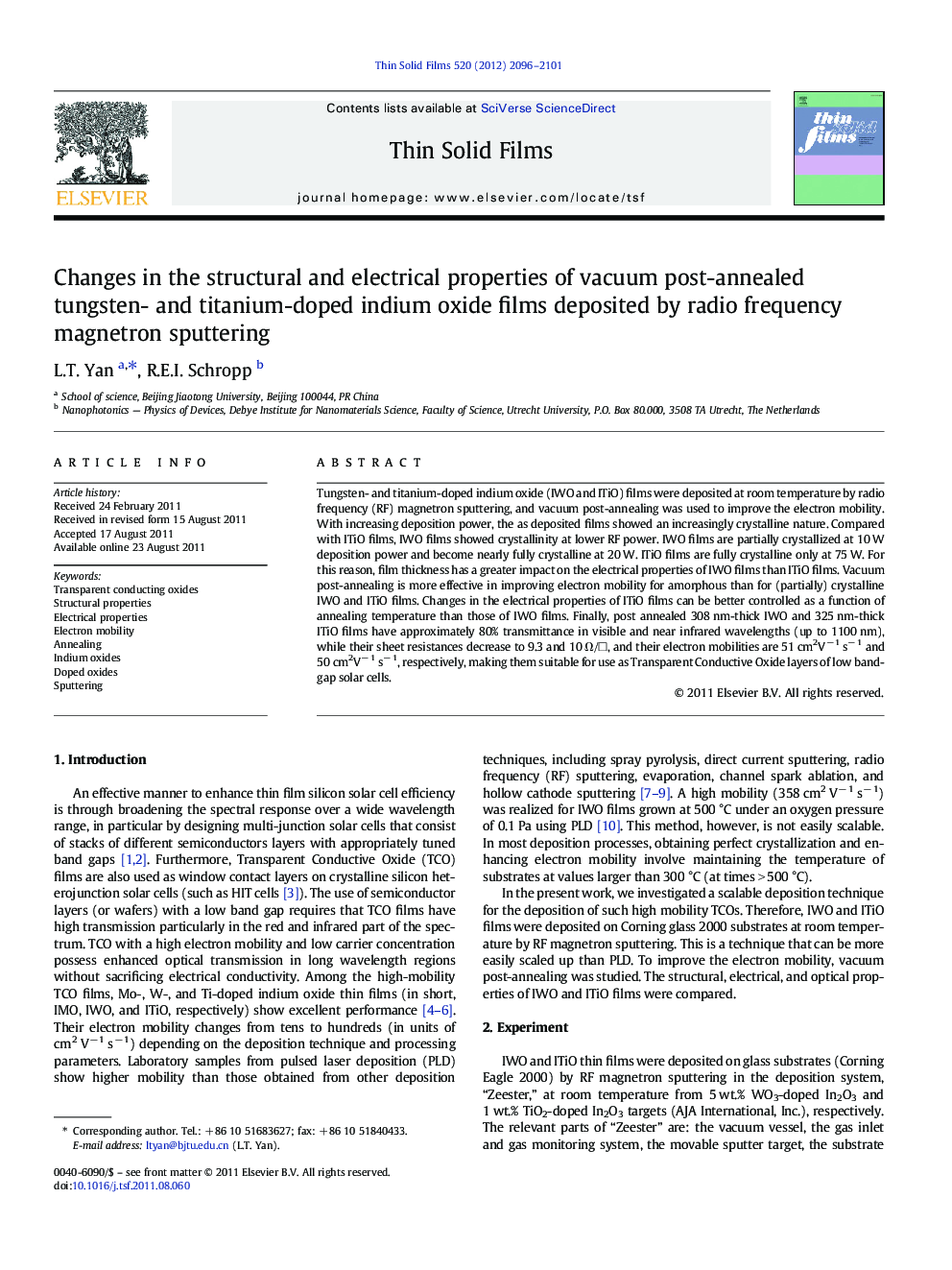| Article ID | Journal | Published Year | Pages | File Type |
|---|---|---|---|---|
| 1667368 | Thin Solid Films | 2012 | 6 Pages |
Tungsten- and titanium-doped indium oxide (IWO and ITiO) films were deposited at room temperature by radio frequency (RF) magnetron sputtering, and vacuum post-annealing was used to improve the electron mobility. With increasing deposition power, the as deposited films showed an increasingly crystalline nature. Compared with ITiO films, IWO films showed crystallinity at lower RF power. IWO films are partially crystallized at 10 W deposition power and become nearly fully crystalline at 20 W. ITiO films are fully crystalline only at 75 W. For this reason, film thickness has a greater impact on the electrical properties of IWO films than ITiO films. Vacuum post-annealing is more effective in improving electron mobility for amorphous than for (partially) crystalline IWO and ITiO films. Changes in the electrical properties of ITiO films can be better controlled as a function of annealing temperature than those of IWO films. Finally, post annealed 308 nm-thick IWO and 325 nm-thick ITiO films have approximately 80% transmittance in visible and near infrared wavelengths (up to 1100 nm), while their sheet resistances decrease to 9.3 and 10 Ω/□, and their electron mobilities are 51 cm2V− 1 s− 1 and 50 cm2V− 1 s− 1, respectively, making them suitable for use as Transparent Conductive Oxide layers of low bandgap solar cells.
